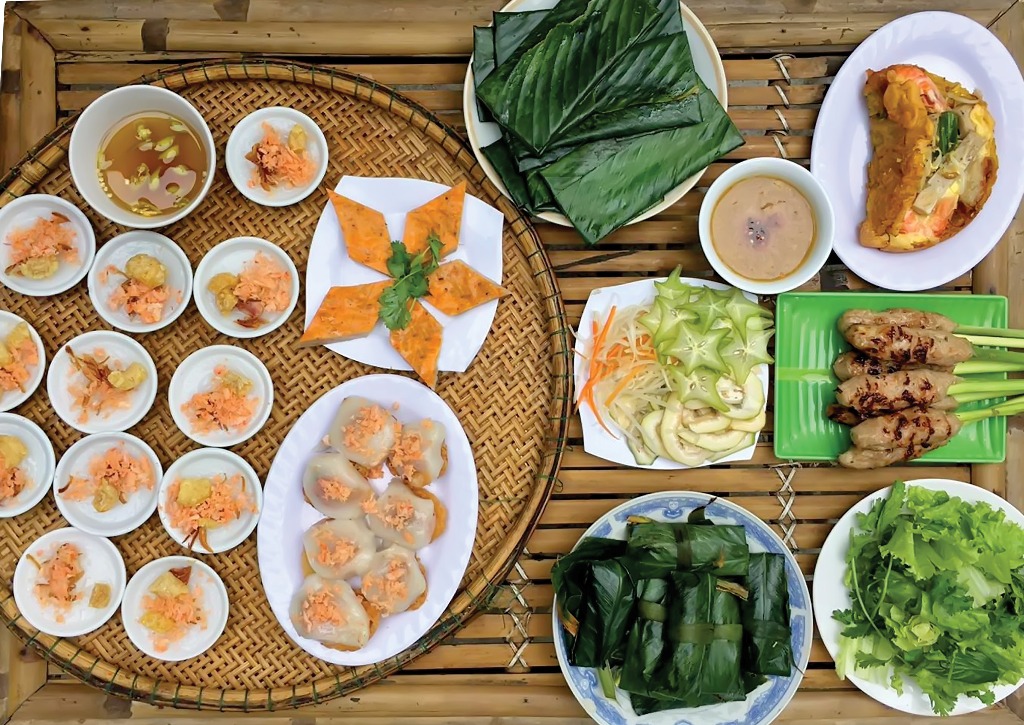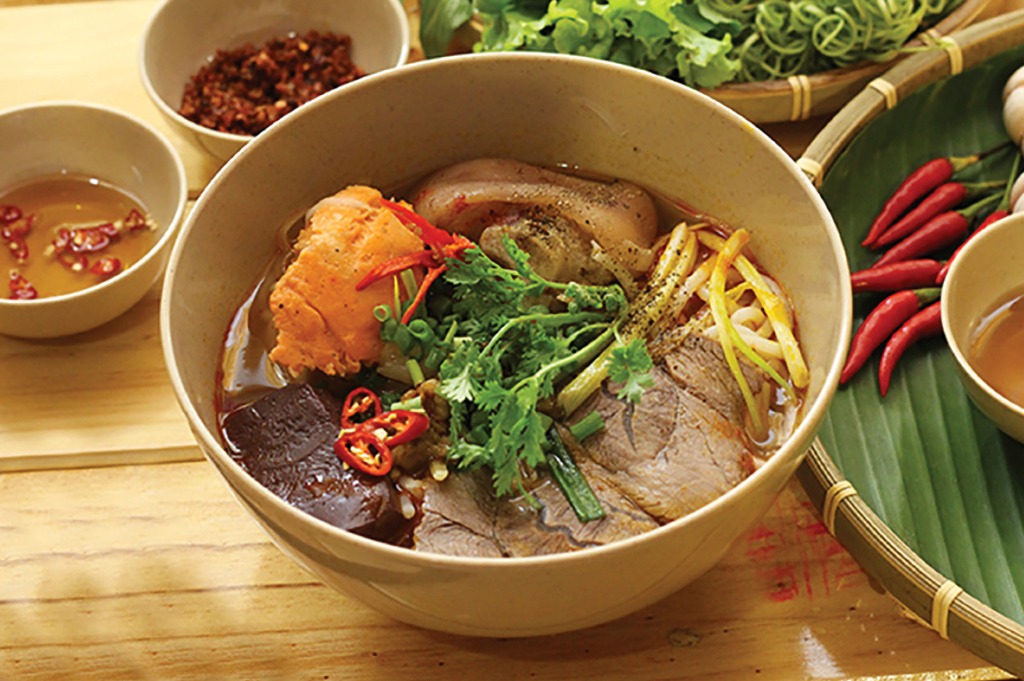According to the statistics provided by the World Tourism Organization UNWTO, a tourist on average spends one-third of their expenses on gastronomy. This is a ground on which our national tourism policy makers are formulating a strategy to turn Vietnam into “the world kitchen." Hue has the opportunity to become the kitchen of Vietnam as among approximately 3,000 dishes nationwide, there are over 1,700 dishes cooked in a Hue style.

Nostalgic Hue delicacies
From a "cultural trademark"
Professor Thai Kim Lan, on coming back to Germany after her visit to Hue, brought back as Tet holiday gifts her own homemade crystallized ginger, chili sauce, pickled shrimp, etc., contained in a bamboo small sieve, together with fine tea wrapped in a banana leaf. Each set of gift is decorated with a banana string, giving it a novelty value.
Professor Thai Kim Lan is among the first people to successfully market Hue cuisine in Germany. According to her, "gastronomy is the most efficient way to promote the image of a country and a culture."
This was true with Hue beef noodle. In a recent show of CNN entitled "Anthony Bourdain: Parts Unknown," which was filmed in Hue, Mr. Bourdain - a renowned American chef, who accompanied President Obama to dine in a grilled pork noodle restaurant in Hanoi remarked, "I would rank Hue beef noodle among the best noodle soup." He even set a criterion for his date, " I would certainly take my date to enjoy Hue beef noodle. If she doesn't like this dish, I guess we can't go any further in our relationship..."
The story about the chef is a shining example about Hue cuisine in general, and Hue beef noodle in particular being a cultural "trademark" powerful enough to attract foreign tourists. Anthony Bourdain makes such a "warning" to his future girlfriend maybe because he can feel that Hue cuisine should not be enjoyed with the tongue only but with all the five senses.
Late writer Nguyen Tuan once remarked that Hue people eat "with their eyes." However, although Hue people seem to resort to all their five senses during their meals, they only eat elegantly, "in small quantities," as they usually say about themselves.
The elegance can be sensed from each tiny banh beo, melting seemingly right on the tip of one's tongue, each incredibly thin banh nam, a bowl of Nam Pho banh canh looking like a colorful mosaic picture, a small bowl of aromatic corn compote from Hen Islet.
Hue cuisine, either delicacies or humble everyday food would appeal to anyone from the first bite with a flavor to linger. Thanks to the skillful hands of Hue women, Hue cuisine seems to be partly a reflection of Hue soul.
Hue became the capital of a united Vietnam in 1802 after King Gia Long founded the Nguyen dynasty. During the Nguyen dynasty, Hue was the culture, arts and visual arts center of the country, including culinary arts serving the needs of the royal family. It is only in Hue where cooking is upgraded to a form of arts, a "cultural trademark" with an underlying far-reaching philosophy. In Hue, mastering cooking has been a must and standard for a sophisticated woman to meet.

To a "tourism trademark"
Being already a "cultural trademark," Hue cuisine has yet to be a "tourism trademark" or "the kitchen of Vietnam." In fact, there are few restaurants that can show off the culinary strengths of this city.
A tourism specialist once made a remark that almost all businesses in Hue only serve Hue typical food, without a systematic planning to promote Hue delicacies. Hue cuisine, therefore, should be promoted in a more professional way.
Particularly, not enough importance is given to vegetarian food - a field that Hue boasts.
In 2011, Hue held the Festival themed "Vietnamese kitchen in a Hue garden" as a very first effort to simulate a royal feast at Duyet Thi Duong. In Festivals 2014 and 2016, Hue Monuments Conservation Center, together with the kitchen staff from Duy Tan Hotel and culinary artist Hoang Anh, held "royal banquets" serving 600 guests a night. However, the efforts have not yet been turned into a policy.
According to researcher Nguyen Dac Xuan, "In order to turn Hue into the capital of Vietnamese cuisine, Hue cuisine needs to be revived, in the sense that a competitive advantage should be developed. The competitive advantage does not mean an introduction of something new but the revival of the standard of the dishes considered as heritage. This should be done in a systematic way with the support from the authorities so as to engage a circle of visionary, capable and knowledgeable people who are also dedicated to the cause.”
Last but not least, to turn Hue cuisine from a "cultural trademark" into a "tourism trademark," making Hue the kitchen of Vietnam, it is essential to have "cooking with heart" as the corner stone, as remarked by professor Thai Kim Lan. "Cooking with heart" is the master of all the techniques, as in Hue, women prepare every family meal with all their heart and soul. Therefore, enjoying Hue cuisine means enjoying decent homemade food.
Story: Hoang Van Minh
Photos: Du Tra